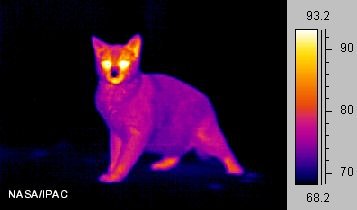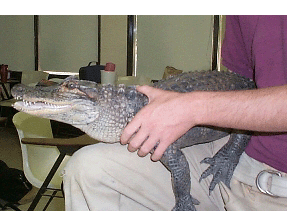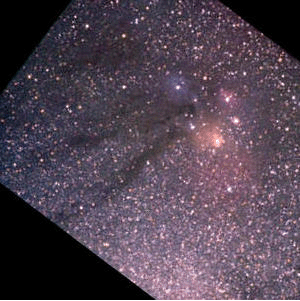![]()
Why a MIPS?
| Infrared is heat radiation. Look at the infrared picture of the cat, with the temperature scale to its right. We see how its body is cool, around 75 degrees, where it is covered with fur - and that is why it has fur, to insulate it and keep heat inside. However, its eyes, inside ears, and mouth are much warmer, up to nearly 95 degrees. This picture shows that the cat makes heat from inside, and keeps a lot of it there by its insulating fur. |  |
| Now keep your eye on the alligator. The visible light picture shows where he reflects light from the room lights, and then the infrared picture shows - nearly nothing from the alligator. In the infrared, he is very different from the cat -- all cold, no evidence of an interior source of heat. Of course, we know that the cat is warm blooded and the alligator cold blooded, determined in other ways. Still, if we saw some new kind of animal from a great distance, we could use infrared images to tell what type they were. For example, the infrared alligator picture does let us identify another warm blooded animal from the glow of its arm. |  |
| To the right, we show a region of the sky in the visible (image with lots
of stars) and then at the MIPS wavelengths (reddish, from IRAS). See how the IRAS image
singles out a bright spot near the center that is a dark cloud in the optical image,
indicating it is buried in a cloud of absorbing interstellar dust. The IRAS image shows
that this dust cloud has its own internal energy, and in fact it has been found to be full
of very young stars forming out of the material of the cloud! MIPS will be able to find
hidden energy sources with far more power (greater sensitivity) and finesse (better
imaging resolution) than IRAS. (images from Astronomical Institutes of the
University of Bonn, http://www.allthesky.com/nebulae/rho.html)
|
 |
To see how the MIPS data will look, peak at the sky maps in the links to the left, and on the comparison with previous far infrared capabilities!
 |
 |
|